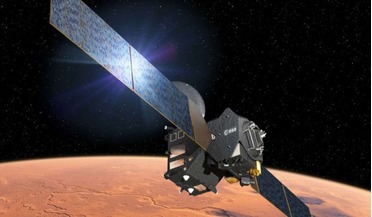 18 November 2019
First global geological map of Titan unveiled
18 November 2019
First global geological map of Titan unveiled
... of a world littered with mountains and lakes due to its active methane-based hydrologic cycle. But like Venus, the moon’s thick, hazy atmosphere has so far hindered many of its geological features at visible wavelengths. Now...
 01 January 2020
What has been in 2019 and what is to come in 2020!
01 January 2020
What has been in 2019 and what is to come in 2020!
... Solar Orbiter is complementary to the Parker Solar Probe which is already in orbit and will make the third Venus flyby (of seven) on 11 July this year as it continues to make close passes of the Sun. Next up is the Indian Space...
 27 March 2020
Mercury's crust could have had episodic habitable conditions, new study says
27 March 2020
Mercury's crust could have had episodic habitable conditions, new study says
... in 1974, when NASA’s Mariner 10 spacecraft made three fly-by’s after it had visited its nearest planetary neighbour Venus. The pictures sent back showed the planet to be strewn with vast chaotic terrains, which for nearly...
 15 May 2020
An unexpected meeting could see Solar Orbiter study Comet ATLAS
15 May 2020
An unexpected meeting could see Solar Orbiter study Comet ATLAS
..., the observatory is now on a two year cruise towards the innermost regions of the Solar System and is using Venus and Earth to slingshot itself into the correct trajectory. But by a happy coincidence, the Orbiters path to the...
 05 June 2020
Exciting exoplanet find around sun-like star
05 June 2020
Exciting exoplanet find around sun-like star
... around their star. This close proximity means their surfaces have more in common with planets such as Venus and Mercury where scorching temperatures bake the planets crust. But, after noticing tiny variations in the...
 15 June 2020
Green dayglow detected at Mars for the first time
15 June 2020
Green dayglow detected at Mars for the first time
... from CO2 which is broken down by radiation from the Sun. CO2 is the main constituent of Mars' (and Venus') atmosphere but some regions of it are easier to study than others. This is where UVIS will come in handy...